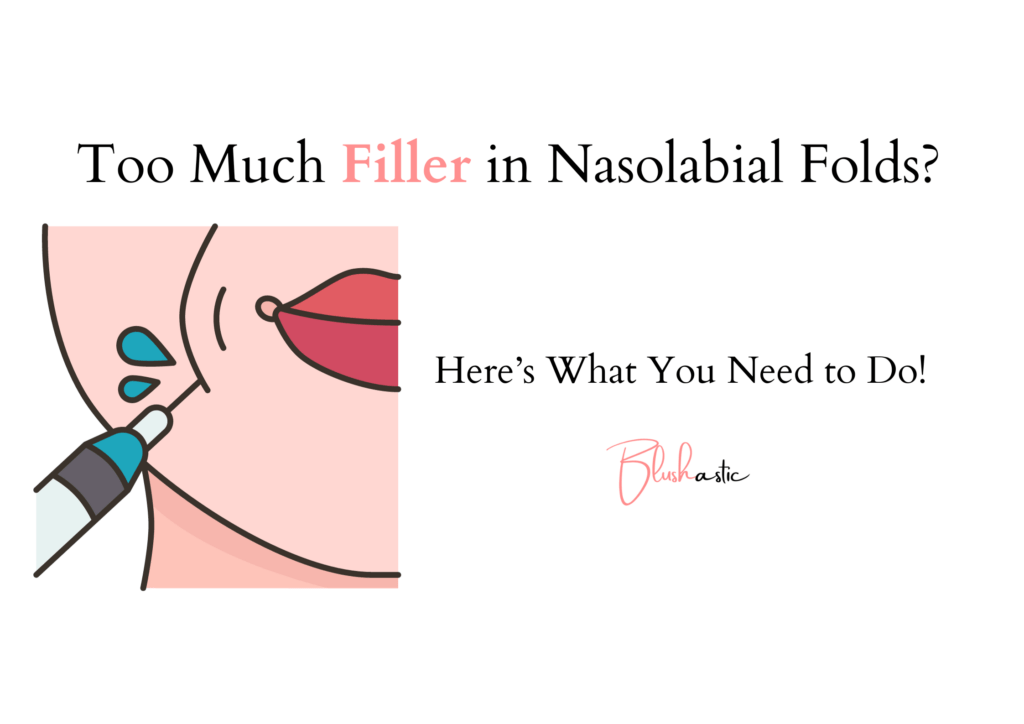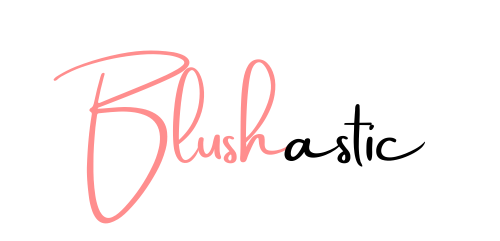Do you also notice your nose-to-mouth line leaving a sharp mark after you smile? Though it is a sign of aging, you may see it even when young. Many opt for the filler treatments to smoothen the nasolabial folds or parentheses. But when this treatment goes wrong, you get a weird face shape.

Suppose your face also looks like a pillow after your recent filler treatment. In that case, it may be because of Too Much Filler In Nasolabial Folds. But what can go wrong, and how to avoid it? Let us understand the nasolabial folds and the filler treatments in this article.
Contents
Too Much Filler In Nasolabial Folds | Nasolabial Fold Filler Gone Wrong?
Nasolabial folds are your nose-to-mouth line that deepens as you smile. This laugh line looks prominent as you age and shows a sharp crease even when your face is resting. But some of you can notice it early in life due to genetics, smoking, sun damage, or weight alterations.

You don’t have to go for surgeries to treat it. The safest option is to look for some injectable dermal fillers like the Hyaluronic Acid ones that enter the skin to give it a ‘plumpy’ effect. It is safe because even if it breaks into blood vessels (one of the most feared complications), hyaluronidase melts the filler away. Though many brands exist, Bellafill, Juvederm, and Restylane are doctors’ favorites.
Benefits of Nasolabial Folds Filler
When performed safely, the benefits of having nasolabial fold fillers are indeed multiple. Our body produces less collagen and elastin (the two protein fibers) responsible for making our skin elastic and firm as we age. Plus, the bone resorption and the compact fat pads that droop decrease support to the cheek, triggering nasolabial folds. The fillers can help you to:

- Tighten the nasolabial fold
- Diminish the smile lines
- Firm the saggy skin around the mouth
- Tone and plump the cheeks
- Lift and reshape your face
- Make you look younger.
Since the fillers are minimally invasive and have quicker results, the changes take less time. But it also has a few side effects.
Nasolabial Fold Filler | How long does it last?
Now, let us see the undergoing process of a filler, their lifespans, recovery time, and what the expected results afterward look like. But first, see what to expect when you opt-in to get the folds.
- You arrive at a licensed practitioner’s clinic and do the paperwork.
- The doctor assesses your skin and discusses the procedure of treatment.
- After cleaning the targeted area, your doctor may apply a numbing cream.
- As the fillers inject your skin, it softens your folds.
- The process can last 10-15 minutes to 1 hour, depending on the depth of your folds.
- You may get a massage and aftercare instructions from your doctor.
What Can Go Wrong?
Nasolabial fold filler migration happens when your filler migrates or spreads to the surrounding area rather than staying within its injected limit. It is a common phenomenon even if you have seasoned medical experts performing it. It may cause lumps and bumps on your skin. But how do you detect the extra filler in your nasolabial folds? By simply noticing if your face looks bloated and puffy after the treatment.
Here are some of the pictures of the nasolabial fold filler gone wrong.



Nasolabial Fold Filler Side Effects
Sometimes, you can see the side effects after the treatment. They may resolve quickly and are usually less severe but sometimes differ. Getting a filler done may invoke a skin injury, swelling, or bruising. Other symptoms include:
- Itching or irritation on the injected area
- Lumps on the skin
- Skin discoloration
- Rashes and redness
- Blurred or impaired vision
Although the last symptom is rare, possibilities exist. The nasolabial filler fold complications can also include skin firmness or tenderness. It is best to rely upon your practitioner’s advice in all these cases.
Needle VS Cannula
The dermal fillers can be injected by either sharp-tipped needles or blunt-tipped cannulas. When the doctor injects with the multiple needle pokes alongside your fold, he inserts the filler into your wrinkles groove to fill in the space and push out the wrinkles to give you an even skin surface. It may also involve injecting fillers into the cheeks and midface to volumize the area that lifts the sag.

The second option is using a cannula (a long, blunt needle) that curves around the blood vessels. Since it has less chance of hitting a vein and causing bruises like in sharp needles, it is safer and more accessible. But, one downside of the cannula is that it only treats shallow nasolabial folds, not deep creases. After viewing the depth of your folds, the doctor decides to employ needles or a cannula.
Filler Lifespan
Both Juvederm and Restylane are one of the best fillers for nasolabial folds. While Juvederm Ultra Plus can last longer for up to nine to twelve or even more sometimes, Juvederm Voluma can stay up to two years. Speaking of Restylane, the classic Restylane can stay put for six to twelve months, whereas the “Lyft” (with a thicker consistency) can last even longer. The recently launched “Defyne” is smoother and lasts up to two years. But, it rests upon your medical practitioner to select the best option.
Before injecting, your practitioner assesses a few risk factors, like infections, allergies, skin disorders, etc. Juvederm and Restylane have differences, but the average cost of fillers for nasolabial folds can range from $600 to $900 per syringe. They vary depending on their brands. Reaching the goal may take only one session and one or two syringes. However, there are different doses for each brand of filler.
Recovery
You may face swelling immediately after the treatment that lasts for 2-3 days. In some unfortunate cases, it may extend to 2-3 weeks. The usual advice you may listen to from your doctor post-treatment is to skip applying makeup for a few hours and not to partake in strenuous activities for a day or two.
Avoid drinking alcohol and stay away from sun exposure. Remember not to enter the tanning beds, saunas, or other heat sources. Do not do facial treatments or apply pressure on the treated area. These aftercare tips reduce the chances of potential side effects and ensure an effective treatment.
A successful treatment will get you a smoother skin surface, fading the wrinkles. But sometimes, you may not get these expected results when your fillers go wrong. Instead, your face may lose its natural shape and resemble a disproportionate facial structure. To treat it, you have a few options in hand.
Too Much Filler in Nasolabial Folds? | Available Treatments
When the filler treatments for the nasolabial folds go wrong, the results can be disastrous. Bumps and lumps may form in some areas due to filler migration. You may notice bloated, disproportionate skin after an unsuccessful treatment. The lumps from Hyaluronic Acid fillers are easy to treat as you can dissolve it with the enzyme hyaluronidase. Your doctor may consider using it via the FDA-approved brands of Vitrase and Hylenex.

Dissolving fillers in the deeper tissues may take one or more sessions. You may receive medications to treat bruising and facial massages to soften the lumps. Sometimes, you may be a victim of a biofilm infection. It happens when bacteria form a film on the surface of injected filler, thus encapsulating it. It may cause swelling and skin inflammation.
Though it is hard to diagnose initially by some practitioners, an experienced doctor with knowledge of human anatomy can point it out. It has the same strategy for elimination. The target is to dissolve the Hyaluronic Acid filler upon which it resides. Our body restores hyaluronic acid naturally, so we don’t face any issues in the long run.
FAQs | Too Much Filler In Nasolabial Folds
Below are some of the most asked questions around the topic that you may see.
How much filler do you need for nasolabial folds?
Based on the depth of your folds, you may need anywhere between 0.5 ml to 3 ml of filler. Your doctor will choose the correct level of stuffing to deal with the required correction level into your folds. Typically, it involves 1-2 syringes per session, and you are good to go!
Can I smile after nasolabial fold?
Yes, you can smile after getting your nasolabial fold filler done, as it won’t affect the behavior or filler. The nasolabial folds deepen with age and accelerate when you stop caring for your body. Facial expressions like smiling will only add a bit to the existing creases, but they do not cause wrinkles.

How long does it take for nasolabial fillers to settle?
It depends upon the type of the filler used for the folds. Unlike Botox, dermal fillers of Juvederm do not mess up with nerve-muscle interaction. Its results may be instantly visible, but it may take a few days to two weeks to settle entirely like Restylane. Sculptra takes even longer to settle. It is a Poly L-lactic Acid facial injection that stimulates collagen to tighten the skin naturally in the longer term, unlike giving an instant plumping effect like Juvederm or Restylane.
Can you overfill nasolabial folds?
You may want to do it sparingly, but the nasolabial folds tend to get overfilled. One can understand when the filler gets extra just by looking at how it looks and feels. Due to this reason, visit only a board-certified, licensed doctor with significant experience in carrying out dermal fillers.
Why is my filler in my nasolabial fold lumpy?
The filler in your nasolabial fold becomes lumpy after spreading beyond its injected area. It may also depend upon the type of filler used that may invoke swelling. Ideally, wait two weeks before retreating to the injected space and dissolving the HA filler. Till then, massage your face to soften the bumpy skin.
Closure | Too Much Filler In Nasolabial Folds
Now you know how the extra filler disrupts the natural shape of the face and the ways to prevent it. You can do facial massage, sleep in the correct posture (face turned up), and wear large eye silk masks to lessen the wrinkle formation. Ensure your dermal filler is FDA-approved and is done by the right hands. It is prevalent to spot too much filler in nasolabial folds.
However, you can dodge this mishap by visiting a seasoned veteran doctor who performs regular fillers and has earned an excellent reputation in this field. They often follow the “less is more” approach when injecting fillers. A medical expert who practices dermal fillers regularly can detail the reason behind your unsuccessful treatment and the treatment process hereafter.
Drop your queries (if any) below, and we will reply to them soon.
Marilyn’s deep interest in fashion, beauty, and lifestyle has led her to pursue a fulfilling career as a freelance writer and blogger. With her bachelor’s degree in fashion design from the Fashion Institute of Technology, she has developed a keen eye for style and trends, making her well-equipped to offer valuable insights into the latest fashion and beauty trends.
